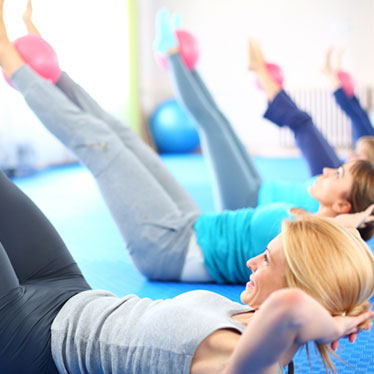Pilates For Cellists

Although people don’t always associate playing a string instrument as an arduous physical task, musicians who perform on a regular basis are just as susceptible to stress related injuries, sprains, and back problems as any athlete. String players in particular subject their bodies to extremes, especially their spine. Many back, neck, and arm problems are related to the contortions required to play the cello, violin, viola, and bass, and although using proper form and never neglecting your warm-up exercises can help reduce the chance of injury, even the most zealous players can succumb to sprains and other damage if they don’t develop a way to effectively prevent them.
Over the last few decades, musicians have begun to place more emphasis on their overall physical health. Music medicine theories suggest that you should think of yourself as an athlete. Studies have found that among a survey of the “musicians in Australia's eight full-time professional symphonic and pit orchestras…84% had experienced pain or injuries that had interfered either with playing their instrument or participating in normal orchestral rehearsals and performances... 50% reported having such pain or injury at the time of the survey, mostly with disorders perceived by the musicians to be work-related.” The same findings discovered that “less than 50%” of the participants had fully recovered from the injury, and although the pain varied by instrument, predominate areas of injury for musicians included the “trunk” (back) area, upper limbs and neck.
Overuse and stress related injuries are common among orchestra players because you have to contort your body to fit the instrument. However, by including strength and posture building techniques into your schedule, you can prevent this kind of pain and debilitation, and prolong your career. Pilates offers those benefits.
What Is Pilates?
The exercise regime, developed in the 1920’s by Joseph Pilates focuses on developing postural alignment, core strength, and muscle balance. The routine uses controlled movements to enhance posture, promote blood flow, and strengthen your core area, which is especially important for cellists. It is used to improve flexibility, reduce pain, and for the rehabilitation of back injuries.
Fortunately, you don’t need special, expensive equipment to do the exercises, all you need is an open area and a floor mat.
Restoring Posture
Pilates uses your own body weight to tone your muscles, particularly those around your abdomen, shoulders, back, hips, and gluts. Building a strong “core” is the foundation of good posture. Moreover, Pilates helps stabilize the shoulder area and helps return muscles to their optimum state.
These benefits provide enhanced breathing control while you are playing and resets muscles so that you are at less risk for pain and imbalance. Because playing the cello requires that you spend long hours in certain positions, your body will adapt and the effected muscles can either stretch or shorten from their normal size. Sometimes, the stress created can result in pinched nerves or other circulatory problems. Pilates helps restore your body to its ideal condition.
Increase Overall Health
Performing Pilates exercises three to four times each week also helps improve your overall fitness. Since many overuse injuries occur because your body can’t handle the additional usage, or you hold some muscles immobile while others are working overtime, a regular fitness regimen will prevent many of these issues.
Increased playing (like getting ready for an important performance), or simply being new to the cello can cause sprains and other problems. Pilates stretches, strengthens, and establishes greater flexibility for your muscles, giving your body the ability to flush away toxins through increased circulation and improved blood flow.
Getting Started
If you’re new to any type of physical exercise, see your doctor before starting a fitness program. Pilates is great for any age, but very young students or those over 40 should also get their doctor’s approval first. Pilates is great for musicians because it helps you create a mindset of health, which reduces stress and the negative influence of body pain.
Search for a certified instructor in your area to find out when you can attend classes. Or, you can visit these sites to arrange for an online class that you can easily work into your schedule: Pilates Anytime or Pilates Lessons.
Extending your career and preventing injuries is as easy as adding Pilates exercises before each practice.


